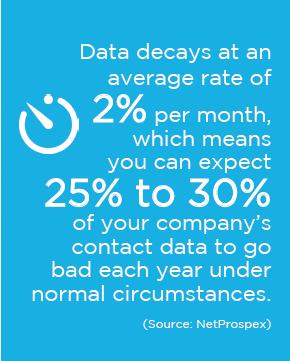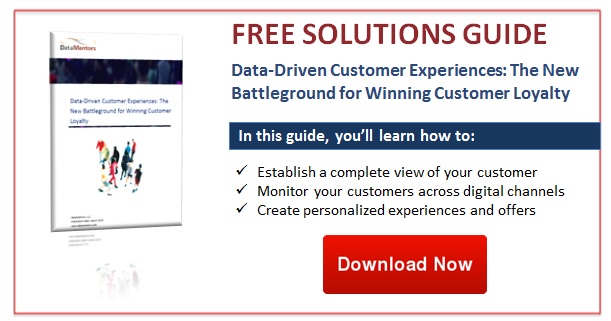
We’ve all seen the saying “Start strong, finish stronger”—probably on a poster at the gym intended to provide inspiration to those struggling on the elliptical, but not in concerns to customer retention. Customer retention is often referred to as a separate process that comes after acquisition, but in reality the lines in between the two processes are blurred.
Yes, there is obviously a difference between acquiring a new customer and retaining a current customer, but the experiences and service that customers receive at acquisition are the most important foundation for their retention and ultimately for their customer lifetime value. Here are 3 ways to ensure you’re starting strong with your consumer relations.
1. Get it right the first time
All data is prone to decay, and a concrete strategy to keep data current is vital for any customer relations strategy. But it’s much easier to keep the quality of data high if it’s input correctly at the onset of acquisition. Implementing processes to collect comprehensive, accurate customer data saves you from future headaches and possible blunders that could affect the consumer’s opinion of your competency.
Once collected, information needs to be filed properly in an intuitive database which can be cross-referenced from other departments. This will save you from falling into the trap of the left hand not knowing what the right is doing. When consumers receive outreach that doesn’t acknowledge their current relationship with the brand it can leave them feeling confused and unappreciated.
2. Be up front and personal
There’s a small restaurant close to where I live, and the owner is always there. The first time I went in he was very friendly and engaged as he introduced himself to me and asked my name, where I’m from, etc. That was about 3 years ago, and every time I go in regardless of how long it’s been he still always remembers not only my name but every detail of our conversation. Considering the fact that I can’t remember what I ate for lunch, I’m always very impressed by the personal attention he gives to not just me, but to every patron that walks through his doors. From my very first interaction, he made a personal connection that has continued despite the fact that I’m not a regular customer.
It may seem impossible for a larger organization to make that type of personal connection with its customers, but implementing a Data-as-a-Service strategy makes it possible. Harnessing big data allows businesses to create comprehensive, 360-degree consumer profiles which shed light on characteristics you may have not realized impact their purchasing process. Demographic, filmographic, and psychographic data can be integrated to create highly granular segmentation strategies. This personalization makes your consumer feel valued and increases the odds of retention.
Consumers are becoming more accustomed to their information being used to construct personalized outreach and have now even begun to expect it as the norm. A recent study by Yahoo and IG shows that 55% of consumers are more likely to engage in a personalized vs. a general ad. Using data to provide personalized offerings and services early on it sets a positive tone for the business-consumer relationship. And a study by Monetate (referenced in the image below) confirms the same evolution of consumer expectations.
3. No, you’re awesome!
It is possible to over-contact your customers with offers. “Do you want to upgrade?” “Do you want to purchase more?” “How about now?” But you can never over appreciate them. Making your customers feel appreciated and valued will keep them coming back for more, which saves you the costs incurred over lost customers and creates an army of brand ambassadors spreading the word about how great your business is.
As many as 3 out of 4 customers say they have spent more with a company because of a history of positive experiences, and appreciation and incentives “just for being you” is a great way to give your customers the warm and fuzzies. Appreciation events, loyalty programs, incentives, and even good old fashioned personal outreach are great ways to build brand loyalty at the first conversation.
A solid customer retention strategy will combine all three, and then some, but it’s worth it when you consider that on average 80% of future sales will come from customers you already have.
Check out our white paper on Data-Driven Customer Experiences for more information on how data-driven strategies can optimize your customer retention strategy.


